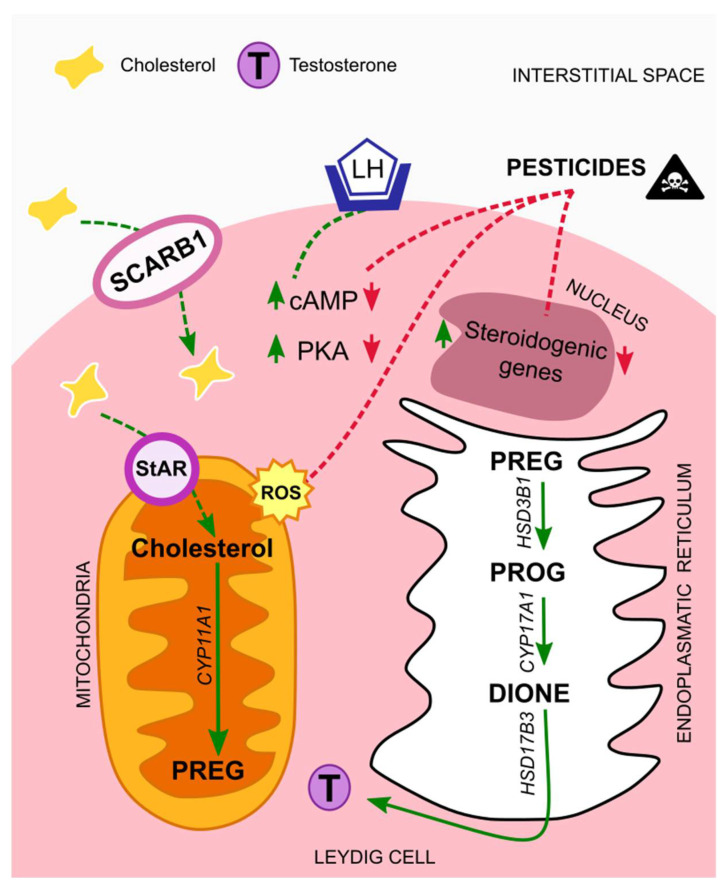Figure 1.
Mechanisms of action of pesticides on Leydig cells. In normal situations the luteinizing hormone (LH) binds to its receptor, LH/choriogonadotropin (LHCGR), present in Leydig cells membrane´s. The levels of cAMP and PKA increase, thus initiating a cascade that leads to testosterone synthesis. Exposure to pesticides interfere with testosterone synthesis cascade, by down-regulating cAMP and PKA levels, and by suppressing the expression of steroidogenic genes. Moreover, it leads to elevated amounts of ROS that contribute to mitochondrial damages. Abbreviations correspond to: LH—luteinizing hormone; SCARB1—scavenger receptor class B type I; StAR—steroidogenic acute regulatory protein; cAMP—cyclic adenosine monophosphate; PKA—protein kinase A; PREG—pregnenolone; PROG—progesterone; DIONE—androstenedione; T—testosterone; ROS—reactive oxygen species.

